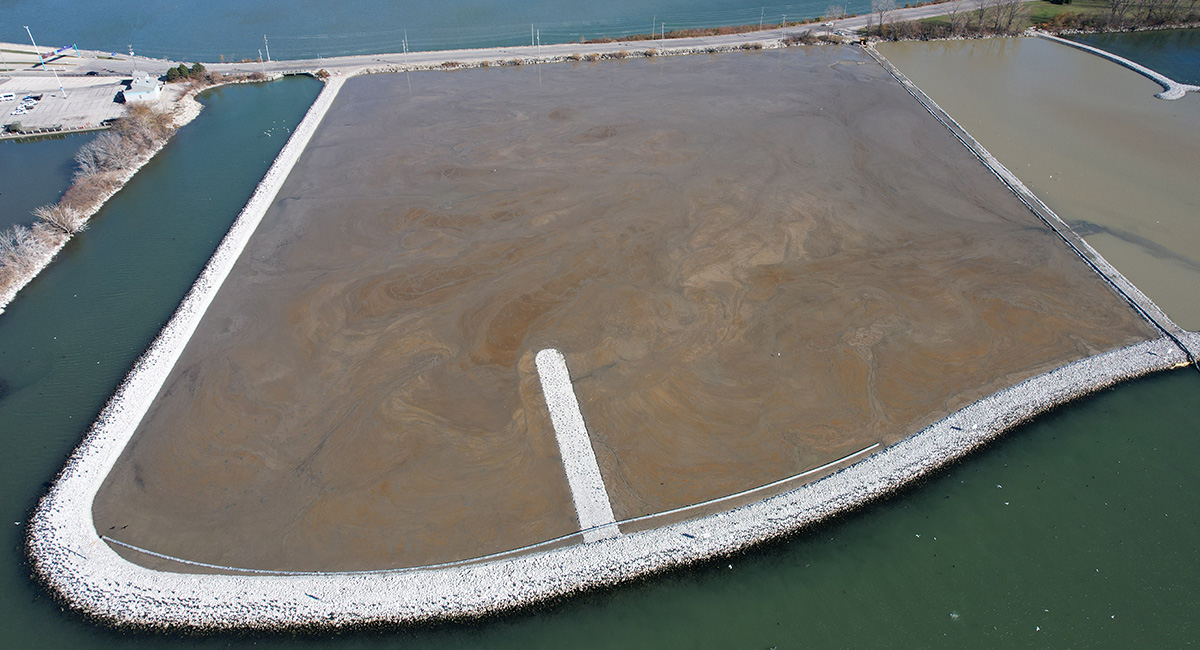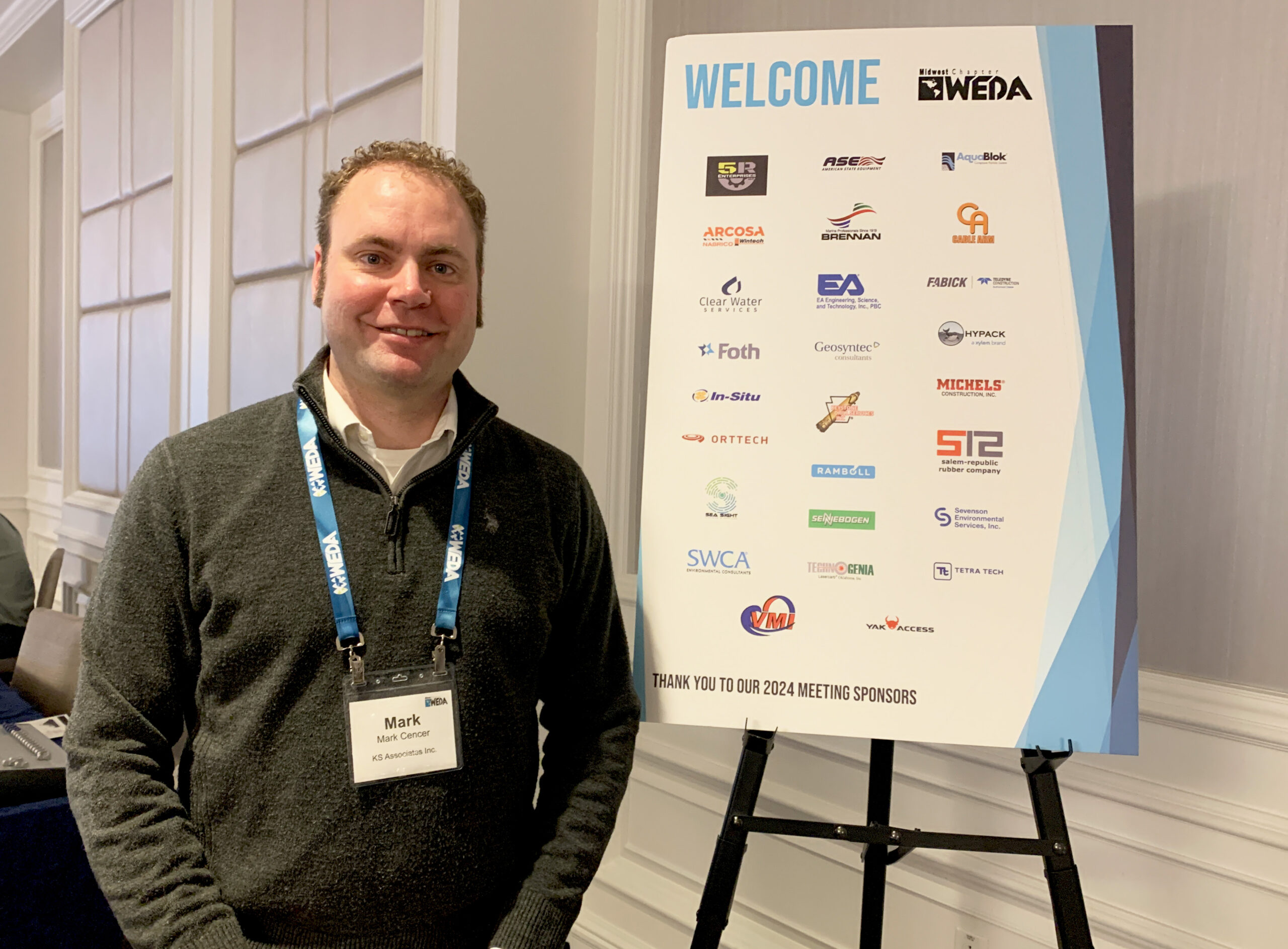
Mark P. Cencer, P.E., Director of Coastal Engineering Services at KS Associates, was among the presenters at the Western Dredging Association’s (WEDA) annual Midwest Chapter Meeting. The three-day event took place March 12-14, 2024, at the Ritz Carlton in Downtown Cleveland. Cencer, along with Scudder Mackey Ph.D. from The Ohio Department of Natural Resources (ODNR), developed a presentation entitled, “Beneficial Use of Dredge Material for Environmental Restoration – Cedar Point Causeway Coastal Wetland Project.” The session took place on Wednesday, March 13, at 9:10 a.m.
KS Associates led the design of two sediment retention cells totaling 32 acres located west of the Cedar Point Causeway along Sandusky Bay in Sandusky, Ohio. The cells contain material dredged by the U. S. Army Corps of Engineers (USACE) Buffalo District from the Sandusky Harbor federal navigation channel, which can no longer be disposed of in the open waters of Lake Erie. For two years, beginning in March 2022, the USACE placed 260,000 cubic yards of clean fine-grained dredged sediment into the cells. A third placement of sediment may be possible in 2024 depending on rates of sediment dewatering, compaction, and remaining volume within the retention cells.
A unique aspect of this project is the use of nature-based design techniques. When dredge material placement is complete, the sediment surface will be regraded to create a wetland complex with natural habitat features. The wetland will capitalize on water level fluctuations between East Sandusky Bay and the Outer Sandusky Bay to move water through the complex and to enhance ecological connectivity, fish and wildlife access, nutrient and sediment processing, and associated water quality benefits. Once the sediment surface is stabilized, native wetland plantings and fish and wildlife habitat features will be installed to create a new functional coastal wetland.
This project is the first fully constructed project of the ODNR Sandusky Bay Initiative (SBI), a multi-year program to improve water quality and fish and wildlife habitat in Sandusky Bay. This innovative project is the first of its kind in the Great Lakes. The project demonstrates the application of innovative design and restoration concepts for the beneficial use of dredge material management, wetland restoration, and nature-based/living shorelines. The lessons learned from this project are being applied to future projects aimed at improving Sandusky Bay habitat and water quality, with the aim of implementing these techniques in other Lake Erie harbors and throughout the Great Lakes.
To learn more about WEDA, go to: WEDA 2024 Midwest Chapter Meeting
About Western Dredging Association (WEDA):
WEDA is a non-profit association dedicated to the advancement of the science and profession of dredging, navigation, and marine engineering. The organization promotes the exchange of knowledge in these fields through national and international technical conferences and events. WEDA publicizes the importance of understanding and developing scientific and technical solutions for problems related to the protection and enhancement of the marine environment; supports educational institutions for students interested in pursuing dredging and marine engineering careers; and recognizes individuals and organizations for outstanding engineering and operational achievements in the field of dredging. WEDA is a member of The World Organization of Dredging Associations (WODA) with a region that covers North, Central, and South America. The Central Dredging Association (CEDA) covers most of Europe, Africa, and the Mid and Near East. The Eastern Dredging Association (EADA) covers the Far East and Pacific region. The three organizations constitute the World Organization of Dredging Association (WODA) with equal representation on the WODA Board of Directors.